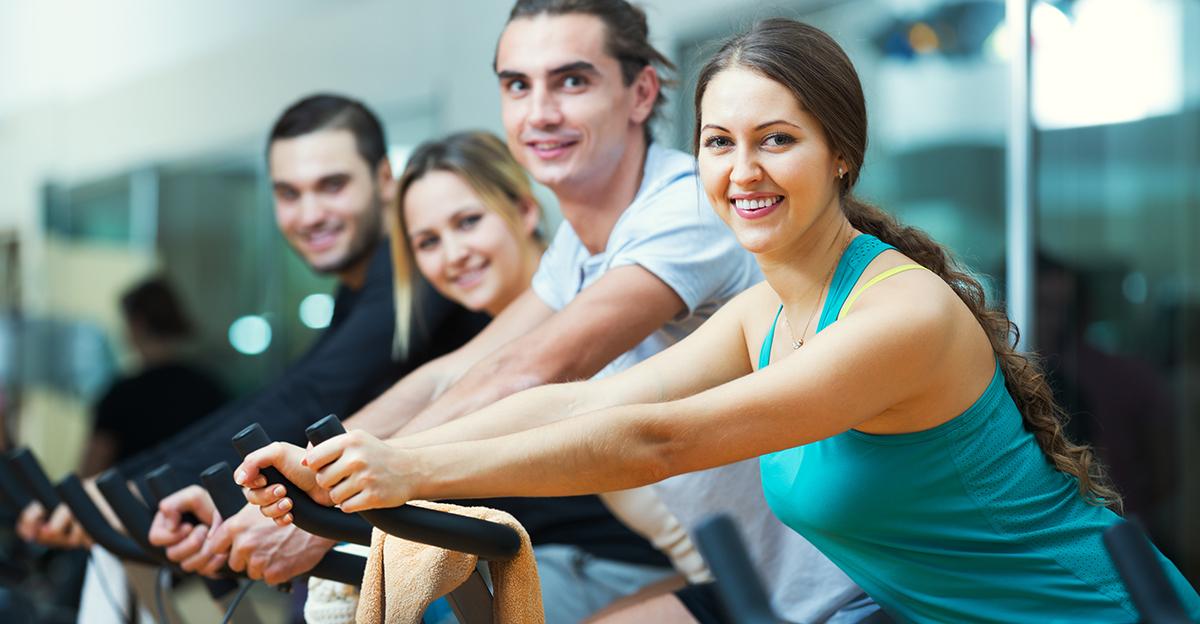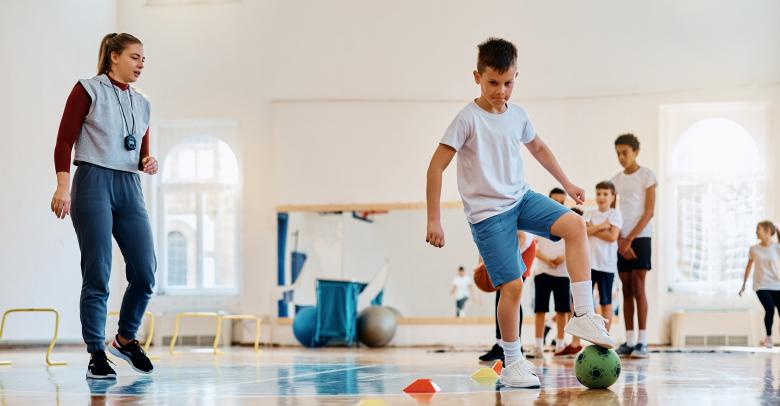Get Cyc’d with Cycling 101! The peloton has been in hot pursuit of you over the last few miles. You are about to start your final ascent to the finish line and are sitting in first place! What will you do to win and retain the yellow jersey?
This is not only the dream of a Tour de France rider but the visualization of an indoor cyclist!
Indoor Cycling
Stationary bikes offer a physical conditioning activity focusing on endurance, strength, interval, and high-intensity training. Often, this popular activity is organized into a group fitness format. Its popularity stems from being a style of workout that offers a large expenditure of energy with minimal impact on your hips, knees, and ankles.
Core Four
The four common ride positions for terrain simulations are:
- Seated Flat – Downhill or flat, mainly used for warm-ups, cool down, and recovery.
- Standing Flat – Downhill or flat, usually for low-to-moderate resistance.
- Seated Climb – Incline, moderate resistance.
- Standing Climb – Incline, high resistance.
3-2-1… Hold On!
Cycling’s three main hand positions (HPs) are:
- HP 1 – Hand placement in center of handles, used for low-intensity work.
- HP 2 – Hand placement in upward curve of handles, used for moderate to high-intensity work.
- HP 3 – Hand placement on top of handles, used when standing for moderate to high-intensity work.
Know the Lingo
Like most activities, Cycling has its own language. Here’s some activity-specific jargon so you are in the know:
- Basket/Cage – A harness attached to the pedal that secures your foot.
- Resistance – Adjust up or down to regulate the intensity of the workout.
- RPM (Revolutions per Minute) – Known as pedal speed, it measures how long it takes one pedal to complete a revolution. This is how a rider sets their cadence or tempo.
- Ride Profile – The result of your cadence and resistance on a ride. Many indoor cycles allow you to choose or design a profile.
- Saddle – Aka the seat.
- Seated/Standing – The position one takes while in the saddle.
Cycling Benefits
- Enhances physical conditioning (aerobic fitness, strength, etc.)
- Has low impact on joints
- Reduces stress
- Assists in weight management
- Is a self-paced activity accommodating a variety of fitness levels
Spin Those Wheels!
If you don’t have a cycle, check with your local gym. You may want to try a group fitness class, as well.
Share Your Knowledge!
What are your experiences engaging in Cycling? What advice would you give to someone who has never engaged in Cycling? Post a response below and let us know!

Dr. Scott Townsend
Dr. J. Scott Townsend holds a Doctorate in Physical Education Teacher Education with a concentration in Curriculum and Supervision. He has worked extensively with curriculum and instruction models, more specifically focused on sport education. Read more posts by Dr. Scott Townsend –>
0

Dr. Derek Mohr
Dr. Derek Mohr, Professor in Health and Physical Edcuation at Appalachian State University, holds a Doctorate in Physical Education Teacher Education with a cognate in exercise physiology from West Virginia University. His focus area is in sport, activity, and fitness pedagogy. Read more posts by Dr. Derek Mohr –>






Leave a Reply